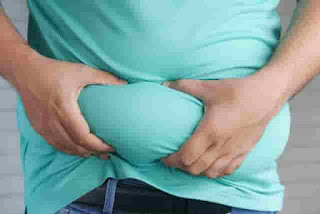In this system of food getting utilized by the body insulin plays a critical role but what if the insulin started to lose its effectiveness, our survival itself can get compromised. in this article we're going to look at what insulin resistance is, its causes and five major signs to tell.
what is insulin resistance.
Insulin is a hormone released by the pancreas that allows the passage of glucose or sugars from the blood stream into the muscle fat and liver cells. the carbohydrates which are present in our food is converted into glucose. when this glucose enters the bloodstream it raises the blood glucose level which triggers the pancreas to release insulin.
The body needs to release a lot more insulin, as you
start becoming more and more resistant. it becomes difficult for the pancreas to keep up with increased blood sugar levels. there comes a
time when the pancreas throws in the towel and is unable to produce enough
insulin. this leads to a consistently high level of blood sugar, which is
characterized by pre-diabetes and full-blown type 2 diabetes.
Another question that might be popping in your head
might be why does the body become insulin resistant in the first place?. many
factors can lead to insulin resistance. obesity and extra weight being the most
prominent ones. excess body fat increases the levels of free fatty acids in the
blood, which according to various studies has been linked with stopping cells
from responding properly to insulin.
the belly fat called visceral fat is particularly dangerous as it releases free fatty acids and inflammatory hormones into the blood stream that contribute to the insulin resistance. other possible causes include high intake of fructose from added sugars, increased oxidative stress and inflammation, lack of physical inactivity, old age, hormones, steroid use, poor sleep, smoking.
The best way to diagnose insulin resistance is to have a doctor who will perform several tests, one of more commonly prescribed tests is the HOMA-IR. which estimates insulin resistance from insulin and blood sugar levels. other than these tests several signs and symptoms can also give away insulin resistance.
let's look at these 5 most common signs of insulin resistance.
No 1. a large waist
If your belly fat reserves just keep piling and you're not necessarily overeating then it is a big sign that you might be insulin resistant. but how does insulin resistance tie up with belly fat? well as your body becomes resistant to insulin, the blood sugar levels increase and to match that the pancreas increases the production of insulin that works fine to lower the blood sugar levels, but there's a side effect.
The excess amount of insulin promotes the conversion of glucose
into fat. so, if your waist line has become too big for your pants recently then
you might want to get yourself checked for insulin resistance. what way should
ring the emergency alarm, usually a waist of 40 inches for men and35 inches for
women is considered problematic and insulin resistance might be the culprit
behind it.
No 2. never satisfying hunger
Hunger is a sign that your body has burned through
your fuel tank and now needs refueling. so when you eat food the energy
production begins again and the feeling of hunger goes away, except for people
with insulin resistance it doesn't. as we said before insulin resistance means
that the body doesn't respond to the levels of insulin that it used to. so, a
large amount of insulin is required to maintain the same blood sugar level. over
time as insulin resistance increases the demand becomes too much for the
pancreas to handle and so the blood sugar levels rise.
The glucose floating around in the blood is of no use to us unless it enters into the cells. so despite what you eat if the glucose stays in the blood then you won't be able to satisfy your hunger. these hunger pangs usually start within half an hour of eating the meal and sugar cravings are especially strong. the unsatiated hunger is also accompanied by a constant lethargy and tiredness due to a lack of nutrient absorption.
No 3. dark skin patches
Another warning sign of insulin resistance is a condition
called acanthosis nigricans. It is a skin condition in which patches of dark
skin form under the armpits, on the back, on the neck, on elbows, knees, ankles
or the knuckles.
According to
experts insulin activates insulin-like growth factor 1 receptors on certain
skin cell types called keratinocytes and fibroblasts. these receptors then contribute
to the dark skin patches. unfortunately, there's no cure for this condition and
you'll have to live with it.
No 4. frequent urination and extreme thirst
Frequent urination on one hand is annoying and on the
other is a clear sign that something is wrong with your blood. since high blood
sugar is toxic and can damage the organs.
The kidneys take it upon themselves to clear the
blood off of excess sugar. that explains the frequent urination and what comes
naturally with frequent urination is the extreme thirst to replace the lost
fluids.
No 5. metabolic syndrome
Finally metabolic syndrome is another strong indicator of insulin resistance. some of the markers of metabolic syndrome include
1. Excess abdominal fat
2. high levels of triglyceride - around 150 or higher
3. Low HDL or good cholesterol - below 50 for women and below 40 for men
4. High blood pressure - around 130 over 85 millimeters of mercury or higher and
5. A high fasting blood sugar - between
100 to 125milligrams per deciliter for pre-diabetes and above 125 for diabetes.
If you
satisfy any three of these markers then you are suffering from metabolicsyndrome, which creates insulin resistance. if you've seen some of these signals
lately manifesting in you then most probably insulin resistance has already started
to disrupt your body's natural sugar cycle. but if you haven't been diagnosed
with type 2 diabetes yet then there's still time to stop yourself from falling
into the pit.
It turns out that you don't have to do anything fancy to reduce insulin resistance. simple lifestyle changes are the most effective way of going about it. let's look at only three lifestyle changes that can put you back on track with a healthy life.
No 1. follow low carb meal.
If the symptoms match and you found that you've developed insulin resistance to some degree then the first thing you should do is reduce carbohydrates from your meal. carbohydrates are converted directly into glucose, which your body doesn't seem to be handling so well. so instead, go for a low carbs like the Atkins plan. where the majority of the calories come from fat and proteins.
No 2. eat less frequently.
Another lifestyle change that has done wonders for many is to increase the time between meals. it is known as intermittent fasting. where you eat in a certain interval of the day and fast in the remaining. fasting reduces the blood sugar levels like nothing else and so it gives much needed rest to the pancreas, which can help with insulin resistance.





